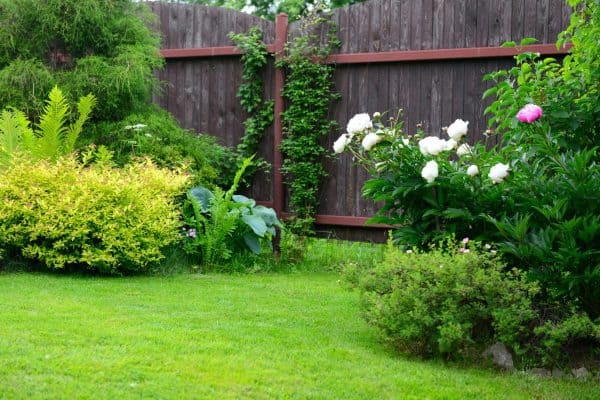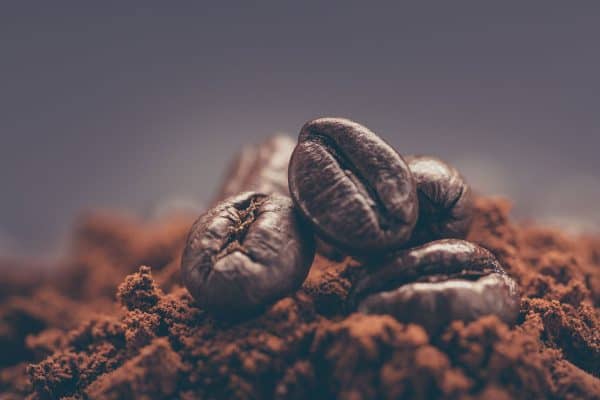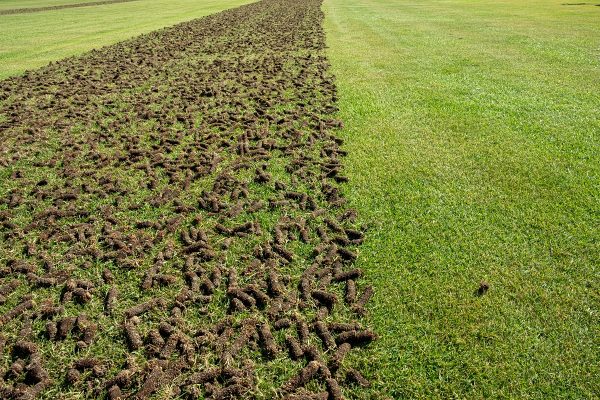Are you planning to add fruit-bearing trees to your garden and want to know the right amount of fertilizer per fruit tree? You’ve come to the right place, for we have researched this question and have the answer for you.
Under normal conditions, there is no need to fertilize fruit trees. However, a tree that is growing less than average needs a 10-10-10 fertilizer that you should apply before the buds break in spring.
If the instructions above seem confusing, do not worry. The succeeding sections have all the information that you need in full detail.
Read on!
![Farmer hand giving chemical fertilizer to young tree, How Much Fertilizer Per Fruit Tree [And How Often]?](https://landscapingbase.com/wp-content/uploads/2022/07/How-Much-Fertilizer-Per-Fruit-Tree-And-How-Often.png)
A Brief Primer On Fertilizers
Fertilizers for plants are like vitamins for humans. They supply plants with the nutrients that they need to improve their health and productivity.
Here are the three main nutrients that plants need.
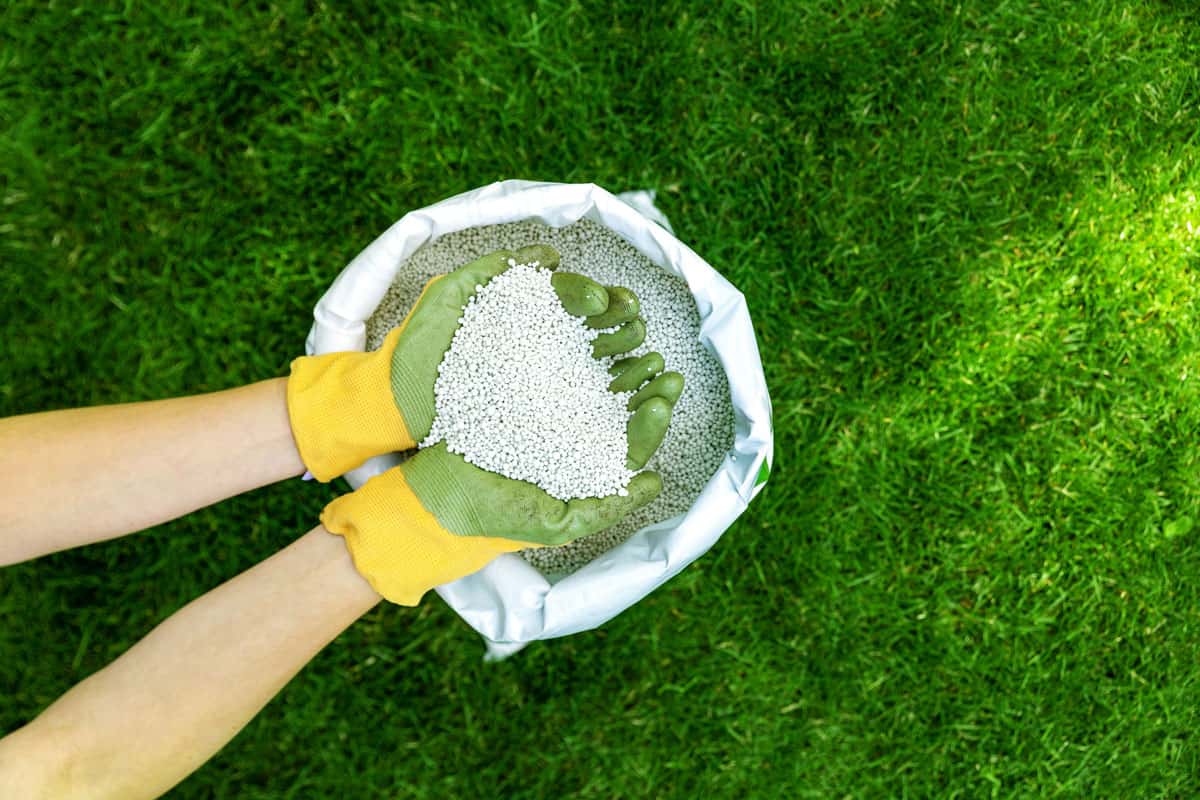
Nitrogen Fertilizers
Nitrogen is one of the main components of chlorophyll that is used by plants during photosynthesis. Photosynthesis is the process where plants use the power of the sun to produce sugars. Thus, nitrogen in fertilizers improves the quality and productivity of plants because it helps produce chlorophyll.
Nitrogen fertilizers contain mainly nitrogen in non-gaseous form so that they can be readily used by plants. Ammonia is a common chemical in nitrogen fertilizers that contain nitrogen that is ready for plants to use.
Phosphorous Fertilizers
Phosphorous is important for plant cell production, especially in the roots. Plants need phosphorous to better store and transfer the energy that they get from the sun.
Because of this, phosphorous is an important nutrient in early plant development. It helps promote flowering, ripening, and tillering.
The most common phosphorous fertilizer is DAP (diammonium phosphate).
Phosphorous fertilizers are often manufactured from mineral phosphate. They grind rock phosphate and treat it with sulfuric acid to produce monocalcium phosphate monohydrate, commonly known as superphosphate.
Potassium Fertilizers
Plants use potassium in enzyme activation and in transporting the products of photosynthesis throughout the plant’s system. It is also important for plants when they need to retain water during droughts or dry months.
One of the most important contributions of potassium to plant growth is in improving the plant’s resistance to diseases.
Potassium fertilizers are high in potassium and are used when the soil lacks this nutrient to produce healthy plants.
How to read fertilizer ratings?
Most commercially available fertilizers have three numbers. An example is the "10-10-10" fertilizer.
The first number represents the amount of nitrogen in the fertilizer. The second number is the amount of phosphorous. The third number represents the amount of potassium in the fertilizer.
Remember the acronym NPK to easily remember what each number represents. NPK is nitrogen, phosphorous, and potassium, their elemental symbols are written in sequence.
The numbers are percentages. So, in our recommendation above, a 10-10-10 fertilizer contains 10% nitrogen, 10% phosphorous, and 10% potassium.
How to determine the nutrient weight in fertilizers?
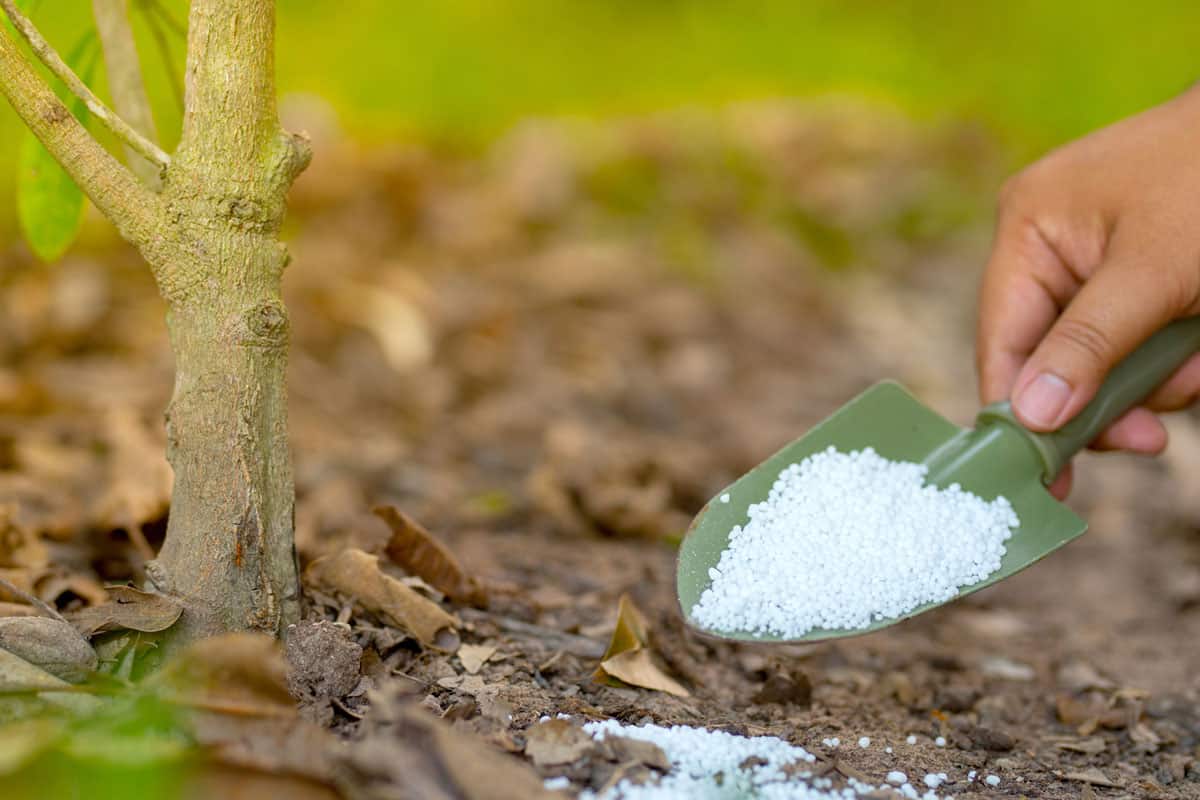
We need the actual weight of the nutrients in fertilizers so that we can apply an accurate amount to our fruit trees. We will talk more about how to determine this in a later section.
To get the actual weight of each nutrient, we need to get the weight of the fertilizer and the rating.
If we use the fertilizer above as an example, simply multiply the decimal equivalent of the rating by the weight of the fertilizer.
So, a 50-pound bag of fertilizer that has a rating of 10-10-10 will have 5 pounds of each nutrient.
What is in the rest of the fertilizer?
Some nutrients like nitrogen cannot be added directly to a fertilizer mix because the natural form of nitrogen is a gas. Thus, they combine nitrogen with another element to change its form.
While you can combine nitrogen with different elements, the resulting element should be one that a plant can easily break down to extract the nitrogen. Additionally, the compound and the element that you combine with nitrogen should not be harmful to the plant.
Therefore, a fertilizer includes the elements that you combine with the nutrients that plants need.
How to determine if a fruit tree needs fertilizer?
Too much fertilizer is not good for your fruit trees. If your fruit trees are getting everything they need from the soil, then you should not give them any fertilizer.
Too much fertilizer can cause trees to produce a lot of new leaves, and this means that they will not produce a lot of fruits. Moreover, a lot of new leaf shoots will turn your fruit trees into insect magnets. The new leaf shoots will be attractive for insects to visit and stay.
Therefore, it is just as important to know whether your tree needs fertilizer or not. Fortunately, your tree will be able to tell you if it needs fertilizer or not.
Follow the simple steps below to find out if your tree needs fertilizer:
Determining Growth
- The first step to finding out if your tree needs fertilizer is to locate the growth ring from last year. Light-colored wood or newly grown wood can be found near the outer part of the tree trunk, behind the bark.
- Measure the branch from the growth ring to the tip of the branch.
- Repeat Step 2 to get measurements from several different branches around the tree.
- Get the average of these measurements.
- Repeat Steps 1 to 4 for each of the fruit trees that you have, even though they are of the same variety.
- Use the information below to determine if your fruit trees grew within average or not.
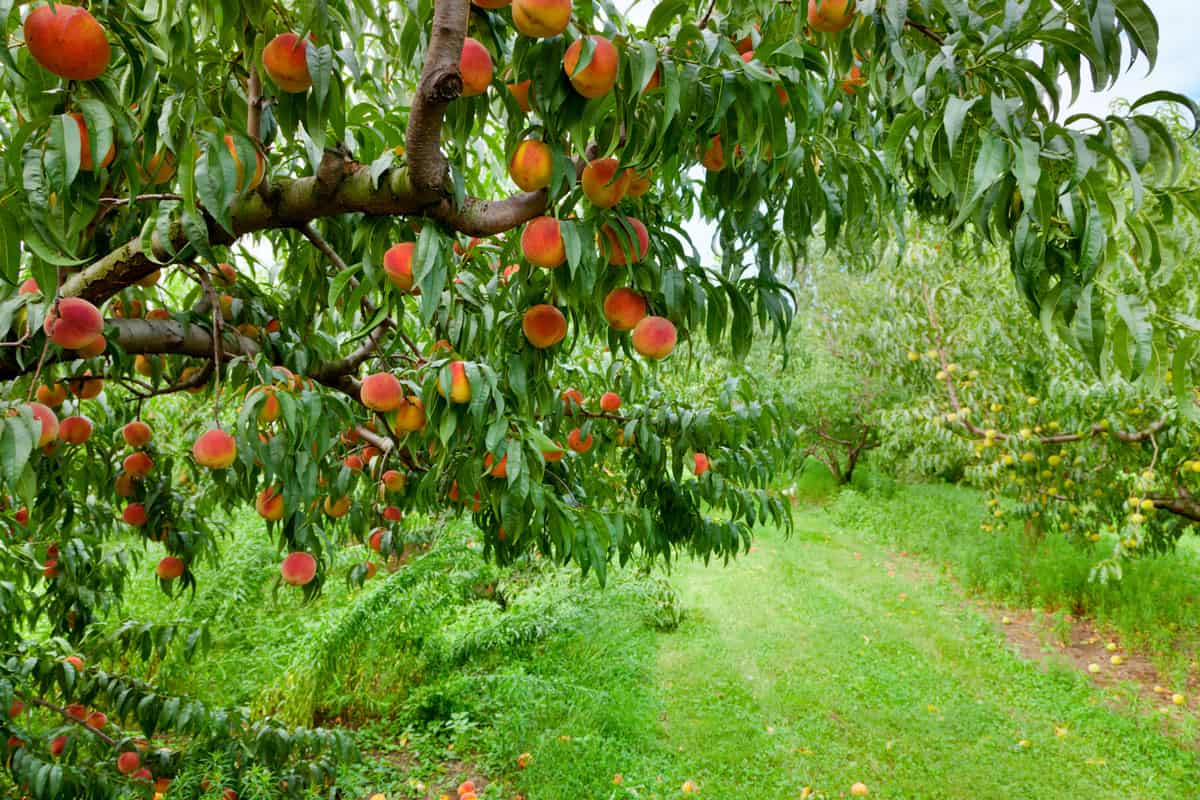
- Non-fruit-bearing nectarines and peaches grow 18 to 24 inches annually.
- Fruit-bearing nectarine and peaches grow 12 to 18 inches annually.
- Non-fruit-bearing apples and pears grow 18 to 30 inches annually.
- Fruit-bearing apples and pears grow 12 to 18 inches annually.
- Non-fruit-bearing plums and sweet cherries grow 22 to 36 inches annually.
- Fruit-bearing plums and sweet cherries grow 8 inches annually.
- Non-fruit-bearing tart cherries grow 12 to 24 inches annually.
- Fruit-bearing tart cherries grow 8 inches annually.
How much fertilizer does a fruit tree need?
After determining that your fruit trees need fertilizers, you need to know how much fertilizer you need. More is not better when it comes to fertilizers. Adding the right amount of fertilizer is important.
Your fruit trees need 0.1 pounds of nitrogen per year of age. Count their age from the time they were planted in your yard.
Follow the steps below to determine how many pounds of 10-10-10 fertilizer you need to get your target weight. Don’t worry, we’ll have a clear sample computation to make it easier for you.


Computing The Amount Of Fertilizer That You Need
- First, determine the age of your tree. Let’s use an example of a fruit tree that is three years old.
- Next, multiply the age of your fruit tree by the standard nitrogen need of a fruit tree per year, which is 0.1 pounds. Multiplying 3 years of age with 0.1 pounds per year, we get 0.3 pounds.
- Next, we determine how much fertilizer we need from the bag. We know that a bag of 10-10-10 fertilizer has 10% nitrogen. To get the total weight, simply divide the amount that you need—0.3 pounds—by the percentage of nitrogen per bag. Based on the 10-10-10 fertilizer that has 10% nitrogen, we divide 0.3 pounds by 10%. But we need to convert 10% to decimal first, which is 0.1. Plug it into the equation, we get 0.3 divided by 0.1, which is 3 pounds. You need 3 pounds from a bag of 10-10-10 fertilizer for a 3-year-old fruit tree.
How to add fertilizer to a fruit tree?
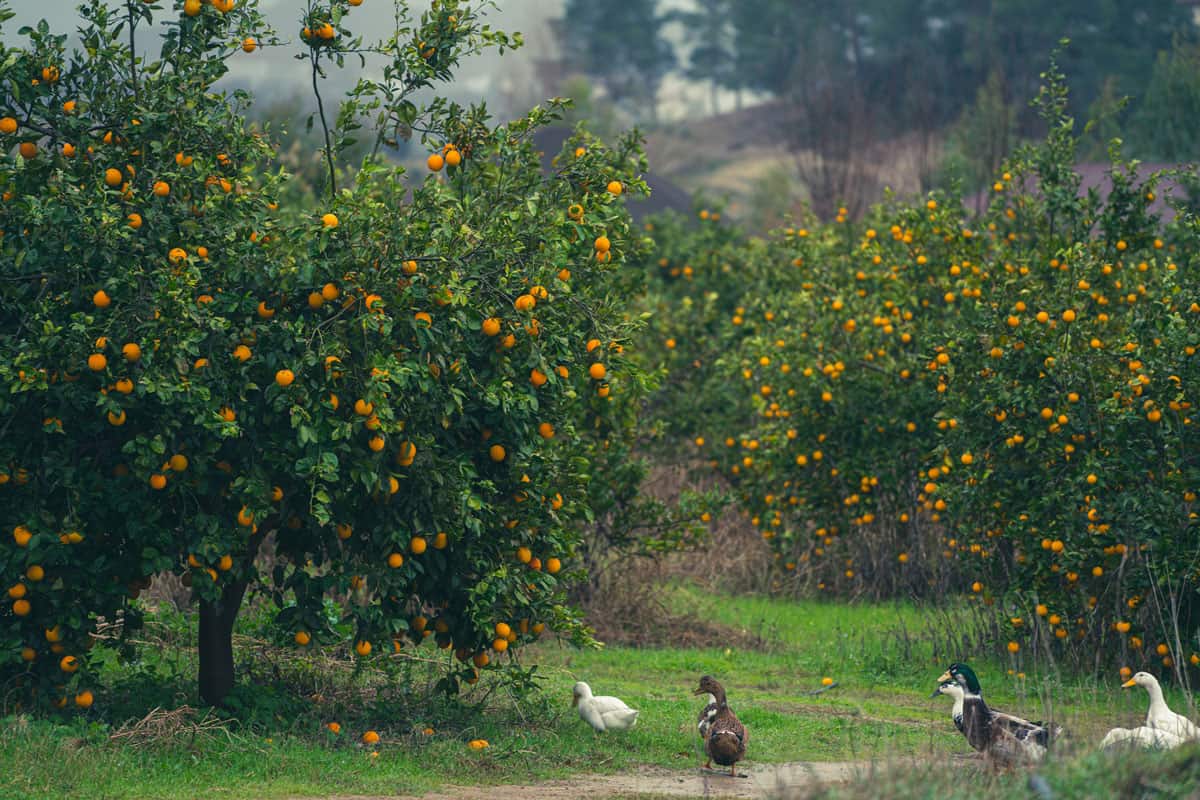
Now that you know how much fertilizer you need, you need to know how to correctly apply it.
The first step to applying fertilizer the right way is marking a circle around the trunk of the tree that is a foot away from the trunk. You will need to add the fertilizer from that circle, all the way to the outermost perimeter where the tree’s branches reach.
Dig a small circular hole six inches deep and 12 to 18 inches apart, starting from the circular perimeter. An auger attachment for a cordless drill will make this faster.
Keep digging holes until you’ve covered the entire area. Place fertilizer into each hole until you’ve distributed the fertilizer on all the holes.
Spread a layer of compost around the fruit tree that is an inch deep. This will prevent weeds from growing and taking nutrients away from your tree.
Do this process each spring, and you will have a healthy fruit tree that will give you a bountiful harvest each year.


An auger drill bit for planting is available on Amazon through this link.
Conclusion

Knowing how to calculate the amount of fertilizer that your tree needs is important so that you don’t add too much fertilizer. Too much fertilizer is not good for your plants.
Looking for other ways to enrich your plants? Check out these related posts:

